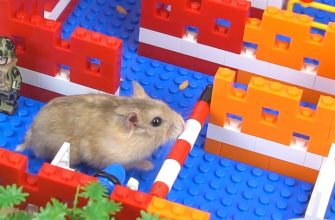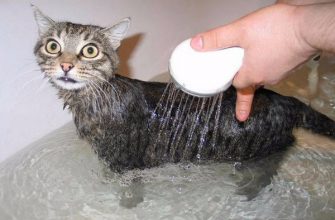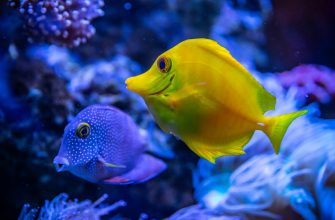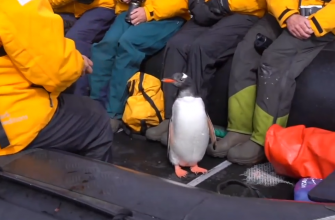Clawed Frogs (Xenopus laevis) are the oldest tailless amphibian creatures with a habitat in Central and Southern Africa. That’s why they are known as African. They are a completely aquatic species.
Born in the USSR
In their natural habitat African Clawed Frogs have different colors – monochrome light green, brown, or with gray or black streaks on the back. The albino type is not the result of melanin deficiency or some genetic mutation. This variety was specially bred in the 1970s by the Moscow Institute of Developmental Biology. Yes, it was born in the USSR!
This frog is used in various scientific-biological research and experiments as a test subject.
The popularity of the albino frog as a pet can easily be explained by its very original, memorable appearance, funny behavior and unpretentiousness.
Attention! Awfully beautiful!
Here are some really outstanding features of the frog’s appearance which make it special enough to be called an «awfully beautiful amphibian princess»:
- Adult females reach very impressive parameters: the body length is up to 12 cm, and the weight is approximately 200 g. (Males are much smaller. Their body length is not more than 6 cm, and their weight is 60-100 g.)
- The skin is smooth, clean white or light pink. There are also specimens with an orange tint. The skin is covered with a thick layer of mucus, which prevents excess water from entering the body.
- The head is small, flattened, with protruding round eyes with red pupils in the upper part. By the way, these frogs have poor eyesight.
- The mouth is wide, with slightly lifted corners. It gives the impression of a smiling frog.
- The tongue is missing. There are a number of small sharp teeth on the upper jaw, but the lower jaw is toothless.
- The forelimbs are short and four-toed. The fingers are long and thin, without webbing between them and without nails. They vaguely resemble human hands is shape. With these forelimbs a frog pushes food into its mouth.
- The hind limbs are five-toed, muscular and rather long. Toes have webbing between them and have spur-shaped claws. (Claws give the name to this type of frog.)
- Touch receptors are well developed. They look like deep side lines along the body and are covered with little hairs. Thanks to them the frog perceives the slightest fluctuations in water which helps the frog to navigate in space and to hunt.
A sedentary creature with incredible jumping ability
As African Clawed Frogs are wholly aquatic, they spend most of the time at the bottom of aquariums in relative rest or hang motionless in the water column. But these frogs do breathe atmospheric air, periodically floating to the surface of the water for this. That’s probably the extent of their activity.
Although this frog is a sedentary creature, it has incredible jumping ability. If it is scared by the slightest noise or loud sounds, it will start rushing around randomly. The frog will definitely jump out from an aquarium if there is no lid and may die. To avoid this, the aquarium must be covered with a transparent tight-fitting lid with ventilation holes.
A silent one, but can sing
Female African Albino Frogs do not make sounds. That is atypical for frogs, but they stay silent all their lives. Males, to attract the attention of females in the mating season, make rather loud melodious trills. Males can sing keeping their heads above water as well as under water, lying on the bottom of the aquarium. Usually their vocal exercises begin in the evening and finish in the morning. The singing continues till the female agrees to mate. The male may sing 3-4 times a year.
Outside of the mating season, which means most of their lives, male African Albino Frogs are also silent.
A capable apprentice
Albino frogs are social creatures and show an interest in communicating with their owner.
So, they hear, remember and clearly recognize the voice of their owner and swim up to the wall of the aquarium when he or she appears. They don’t react to other people or will hide.
These frogs are very smart! They can even be tamed. For example, if you regularly offer food to a frog from your hands, then over time it ceases to be afraid of you sweeping food into its mouth with its forelimbs and even allowing itself to be stroked.
A bit of greedy predator
Albino frogs are voracious predators. It seems they are always hungry. No matter how much food and how often it is given, the frog will always eat.
Hence the tendency for them to become rapidly fat and, as a result, shorten their live spans. Therefore, the number of meals for an adult frog should be regulated – no more than 2-3 times a week. And the diet must include meat and fish.
African Clawed Albino Frogs are predators, so their coexistence with other aquarium inhabitants is simply impossible. All small species will be hunted, and those that can fit in the frog’s mouth will be eaten. These frogs can readily eat their own offspring if they are not transferred to another aquarium immediately after laying eggs.
An aquarium long-liver
Albino frogs almost never get sick. They are very hardy – they can stay without food for a long time. The biggest danger to them is lack of water. When the moisture evaporates from their skin, the frog literally dries up and dies. A couple of hours is sometimes enough for this process.
That’s why it is so important to make sure that the frog does not jump out of the aquarium, to deprive it of any opportunity to escape from the water space.
But in comfortable conditions that meet all the requirements, with the right care and proper nutrition, this frog can live up to 15 years as a happy pet and bringing joy to its owners.







